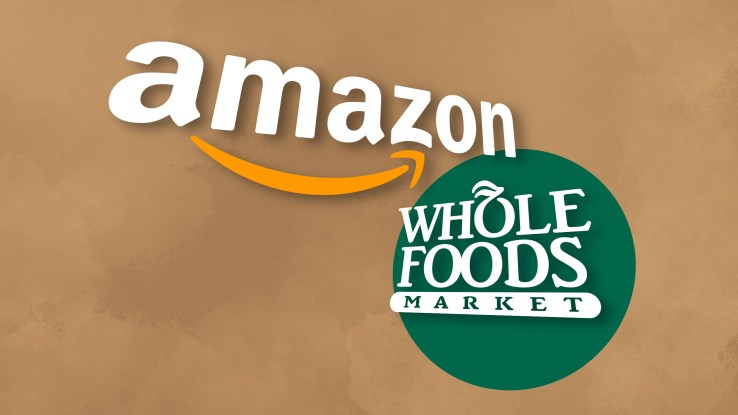Amazon will lose money on Whole Foods — but probably not for long

Sometimes giving up something in the short-term can yield a big reward in the long-term. That’s the idea behind many of Amazon’s businesses, and that’s particularly true of the recent Whole Foods deal.
Amazon’s purchase of the upscale Whole Foods grocery chain for $13.7 billion will go through on Monday, and already the online retailer has said prices will drop on certain organic staples starting then.
The news sent other grocery retailer stock prices tumbling. Walmart fell by 5 percent, Costco was down by 7 percent and Kroger plummeted a whopping 9 percent. Altogether, the three lost nearly $19 billion in market value the June day that Amazon announced the deal.
Like most other Amazon business services, the Everything Store stands to lose a good deal of money on the grocery chain. “This is going to be a money pit for them,” says Gene Munster, managing partner at Loup Ventures and a former Amazon analyst at Piper Jaffray.
So why the acquisition? Because food sales haven’t really shifted online, and Amazon aims to change that. Sure, there are apps for meal delivery services. There’s also Instacart and even Amazon’s grocery delivery Amazon Fresh. But Munster argues the Whole Foods deal changes the game. “This is global domination theory,” he says. “That may take five years, but as the order density starts to increase it can scale.”
In other words, it doesn’t matter right now that Amazon is losing potential billions. For the first time, it will have a physical location in every well-heeled ZIP code in America. Combine that with its ability to run logistics at scale, and Amazon is betting that it will crush the competition and increase sales to a point where it starts turning a much larger profit later on.
You can bet that other grocers are taking a much harder look at their delivery and online purchase options as a result. Walmart has already introduced plans for a drone-deploying blimp to deliver items in specific locations and a drive-up option at its warehouses to make purchasing easier. (Amazon, you may recall, filed a patent for a similar drone-filled floating warehouse a year ago for the same purpose.) Many regional and local chains are also looking to speed deliveries by expanding their online services, including Albertson’s.
Not everyone is excited about the moves, unsurprisingly. President Trump has called Amazon a monopoly. A union representing grocery workers has also warned that the deal is a “threat to Whole Foods workers and their families,” and suggested these employees demand a commitment from Amazon that it not automate their jobs.
There’s seemingly little to stop it now, however. The Federal Trade Commission has blessed the deal, saying that following an investigation into the tie-up, it doesn’t think it will substantially lessen competition.
That’s a good thing, too, as far as Munster is concerned. He sees lower prices, more selection, better experience and quicker delivery on everything you can imagine a pretty great proposition for customers — especially because it’s one retailer who is providing all of it, not in spite of the fact.
“The beautiful thing about Amazon is that you have infinite choice,” Munster says. “The selection is 300 million-plus [products]. As long as the consumer experience is good, and choice is good, that’s what’s most important.”